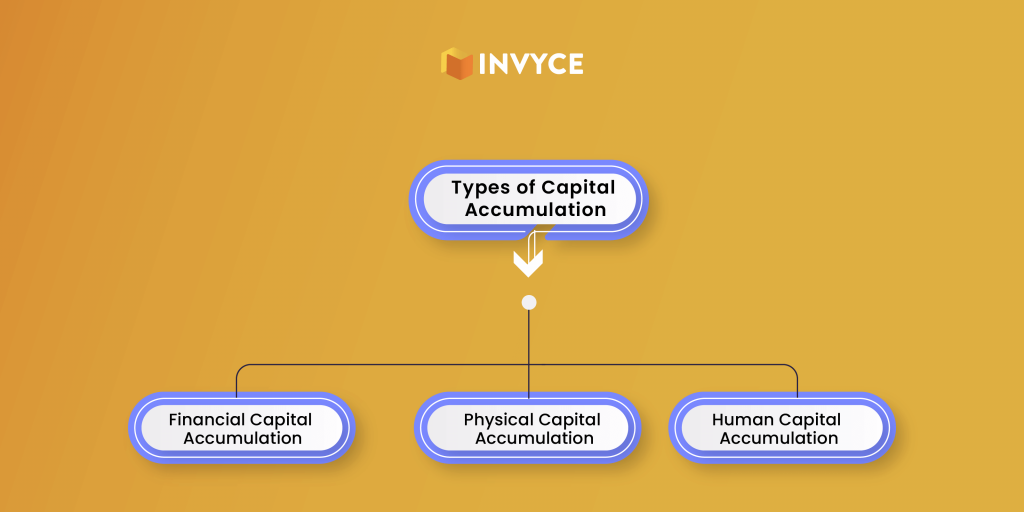14 Nov

What Is Capital Accumulation?
Capital accumulation is the appreciated value of investment at a certain point. Capital is invested to finance its growth. Without careful consideration of accumulation of capital, investing capital can be harmful. This blog includes the definition of capital accumulation, how to measure and calculate it, what are its types and benefits.
What Is Capital Accumulation?
Capital accumulation is an increase in the value of tangible and intangible assets resulting from investments and profit generated by a company. In other words, it is the increase or growth in the existing wealth of the business. Simply put, the profit, value, or wealth a business generates through investments is capital accumulated.
The business can accumulate a capital from;
- Rent
- Capital gains
- Appreciation
- Savings
- Purchasing tangible assets
- Investments such as bonds, shares, or other securities
How To Measure Capital Accumulation?
- The main way to measure capital accumulation is through the change in assets. The value of assets increases over time is the accumulation of capital.
- Another way is to analyze financial statements, including income and cash flow statements. The income statement gives an in-depth account of profits, which helps with capital accumulation. The cash flow statement includes cash flows from operating activities, investment activities, and financing activities.
- You can also measure it by taking the difference between the invested amount and investment value on the day of calculation.
Calculating Capital Accumulation
Capital accumulation is the positive difference between the amount invested and the value of that investment on the date of calculation or on the maturity date.
Capital accumulation = investment value on the date of calculation – invested amount.
For example, Let’s say company ABC invested in shares, equipment, and building one year ago. The invested amount and current value of each investment are given below. Using data, find out the capital accumulated by the company.
Capital accumulated = $34,000 – $25,000
Capital accumulated = $9000
Different Types of Capital Accumulation
There are different types of capital accumulation, each with its own advantages and disadvantages. The most common types are:

Financial capital accumulation
This is when businesses reinvest their profits back into the company to finance growth. The main advantage of this type of accumulation is that it doesn’t require additional borrowing, which can be expensive. The downside is that the reinvested funds can take a long time to generate new growth.
Physical capital accumulation
This is when businesses invest in new machinery, equipment, or facilities. The main advantage of this type of accumulation is it can lead in increased productivity and efficiency. The downside is that it can be expensive and may require taking on debt to finance the investment.
Human capital accumulation
This is when businesses invest in training and development programs for their employees. The main advantage of this type of accumulation is that it can lead to increased employee productivity and satisfaction. The downside is that it can be costly and require hiring additional staff to manage the program.
Benefits
The benefits of capital accumulated are numerous but can be summarized as follows:
- Capital accumulation leads to improved productivity and living standards.
- It results in greater investment, which in turn stimulates economic growth.
- The capital provides the funds necessary for businesses to expand and create new jobs.
- Accumulation of capital allows businesses to take advantage of economies of scale, results in lower production costs and prices.
- It generates wealth, which can be used to expand business, finance social welfare programs or other public goods.
Conclusion
Capital accumulation is a process of acquiring wealth through investments. In simple words, it means accumulating the amount of money required to invest in various financial assets such as shares, bonds, real estate, etc.
Content writer at Invyce.com
Related Post
Copyright © 2024 – Powered by uConnect



Meena Khan